Comparison of Edible Oils by GCxGC–TOF-MS and GC–High Resolution TOF-MS for Determination of Food Fraud: A "Foodomics" Approach
Special Issues
Here, a method to characterize edible oils and edible oil mixtures through fingerprinting and the isolation of individual analyte differences is reported. Aroma and flavor analytes in extra virgin olive, olive, peanut, grapeseed, and vegetable oils were sampled with headspace solid-phase microextraction (HS-SPME).
Here, a method to characterize edible oils and edible oil mixtures through fingerprinting and the isolation of individual analyte differences is reported. Aroma and flavor analytes in extra virgin olive, olive, peanut, grapeseed, and vegetable oils were sampled with headspace solid-phase microextraction (HS-SPME). The samples were analyzed with complementary gas chromatography (GC) systems; two-dimensional GC paired with time-of-flight mass spectro-metry (GC×GC–TOF-MS) and one-dimensional GC coupled to high resolution TOF-MS. These methods allowed for comparing edible oil varieties by their chromatographic fingerprints, characterizing the samples with the identification of individual analyte differences, differentiating oil mixtures from pure oil varieties with principal component analysis (PCA), and confirming analyte identities with accurate mass data.
Characterization of food products, including distinguishing differences, is important in the food industry. Differences that are intentionally introduced are of particular interest. The global marketplace has seen an increase in cases of food fraud, which is loosely defined as the deliberate misrepresentation of a product for the purpose of monetary gain, with cost estimates of these types of fraud at $10–15 billion dollars per year (1). Olive oil adulteration ranks near the top of all reported food fraud cases with common adulterations including the substitution of olive-derived oils with other less expensive edible oils or the mislabeling of regular olive oils as extra virgin olive oil (2).
These adulterations are often difficult for a consumer to detect, but can decrease health benefits and have the potential for unintended exposure to allergens — for example, by adulteration with nut oils. Detecting food fraud experimentally is also challenging because of the inherent variations of natural products and the wide range of potential methods of adulteration. Targeted analytical tools to screen for specific analytes or known adulterants have the risk of missing new or unanticipated mechanisms of food fraud. Nontargeted analytical methods, especially those that isolate individual analytes within a food matrix and characterize complex food products, are well-suited for addressing these challenges.
Gas chromatography (GC) is a well-established analytical approach used in the food industry for isolating individual analytes within a complex matrix. For many samples, one-dimensional GC is sufficient to isolate the components of the mixture, but as sample complexity increases so does the occurrence of coelution. One approach to handle increased complexity and analyte coelution is the use of comprehensive two-dimensional GC (GC×GC), which couples a complementary second separation dimension to the primary column and leads to an increase in the peak capacity, theoretically as high as the multiplicative of the individual peak capacities of each column. This technique has been shown to be a powerful method for analyzing food products (3).
Coupling GC separations with mass spectrometry (MS) provides a means for identifying the isolated analytes present in the food sample. When unanticipated analytes are present, identification can provide insight to the mode of adulteration. Time-of-flight (TOF) MS is especially beneficial for nontargeted analyses as it is capable of collecting full mass range data at fast acquisition rates and target analytes do not need to be specified before acquisition. Full mass range spectra can be library searched for identification and accurate mass information from high-resolution MS systems provides added confidence to identifications with formula computation capabilities. In this study, both one-dimensional (1D) and two-dimensional (2D) GC and both nominal and accurate mass MS systems were utilized, providing complementary and confirmatory information to characterize edible oils. These analytical tools have the potential to identify food fraud through differentiation of oil varieties and oil mixtures.
Methods
Sample Preparation and Solid-Phase Microextraction Parameters
Three extra virgin olive oil varieties as well as one of each olive, vegetable, peanut, and grapeseed oils were analyzed. A 2-g sample was pipetted into a 10-mL headspace vial and sealed. The headspace solid-phase microextraction (HS-SPME) sampling was performed by incubating the samples at 40 °C for 5 min immediately before 25 min of extraction at the same temperature. A divinylbenzene–carboxen–polydimethylsiloxane (50/30 µm DVB/CAR/PDMS, Supelco) fiber was used, and the fiber was exposed in the GC inlet at 250 °C for 2 min to desorb analytes for injection. Three replicates of each oil variety were analyzed.
GC–TOF-MS Method Parameters
GC×GC analyses were performed with LECO's Pegasus 4D system, consisting of an Agilent 7890 GC system, modified with LECO's dual-stage quad jet thermal modulator and secondary oven and paired with LECO's Pegasus TOF-MS system. GC–high resolution (HR)-TOF-MS analyses were performed with LECO's Pegasus HRT system consisting of an Agilent 7890 GC system paired with LECO's high-resolution TOF-MS system. Method parameters are compiled in Table I.
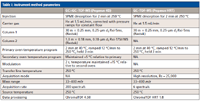
Table I: Instrument method parameters
Data Analysis
Peak finding and library searching were performed with automated peak finding tools in LECO's ChromaTOF software. Principal component analyses (PCA) were implemented with the XLSTAT software package through Excel. PCA on the chromatographic fingerprint was performed on raw total ion current (TIC) GC×GC traces that were exported from ChromaTOF and compiled in Excel. The data were prepared for feature selection within the ChromaTOF software by compiling peak information across all samples. Various feature selection tools were utilized including ChromaTOF's reference feature, review of fingerprinting, and Student's t-tests comparisons between edible oil varieties. The aligned analytes were exported, standardized for pre-processing, and submitted to PCA in XLSTAT.
Results and Discussion
The analysis of adulterated olive oils was explored with complementary GC–MS instrument platforms. A nominal mass MS system was coupled with GC×GC and a high-resolution MS system was paired with GC. These analytical tools provided fingerprint characterization as well as the ability to isolate and identify individual analytes for further insight to the oil varieties.
GC×GC–TOF-MS Fingerprinting Characterization of Edible Oils
Because food fraud can involve multiple edible oil varieties, a collection of representative edible oil samples were characterized and compared to investigate adulteration. Three extra virgin olive oil samples and one of each olive, peanut, grapeseed, and vegetable oils were prepared and analyzed with these methods. Example chromatograms for each sample are shown in Figure 1 and many similarities and differences were noted. The visually distinct two-dimensional chromatograms that are generated with GC×GC allowed for rapid preliminary comparisons of the samples.
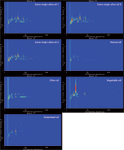
Figure 1: Representative TIC chromatograms for three extra virgin olive oil varieties and olive, peanut, grapeseed, and vegetable oils, analyzed by GCÃGCâTOF-MS.
The TIC chemical fingerprint traces were exported and submitted to PCA to investigate the ability to classify and group the oil varieties by type with the visual chromatogram. The corresponding scores plot is shown in Figure 2a with each sample represented as a circle. Each edible oil variety is clearly and distinctly grouped in the first three principal components, which capture a combined 86.1% of the variance. To simulate adulteration, 50% mixtures of each oil variety mixed into extra virgin olive oil were prepared and submitted to PCA along with the pure oil varieties with the scores plot shown in Figure 2b. The mixture samples, indicated with blue outer circles, have scores that fall between the pure oil variety and that of extra virgin olive oil, indicating their difference from either pure group and suggesting the potential to detect food fraud by GC×GC fingerprinting.

Figure 2: The TIC traces were submitted to PCA. (a) The score plots show the edible oil varieties clearly distinguished and (b) the distinction of simulated fraud mixtures (with blue outer circles) as different from the pure oils.
Complementary Isolation of Individual Analytes with GC×GC–TOF-MS and GC–HR-TOF-MS
In addition to fingerprinting to compare the samples overall, specific analytes that distinguished the oil types were also determined to gain further insight. These complementary analytical tools increase resolving power, chromatographically and mass spectrally, to allow for more comprehensive sample characterization and better isolation of individual analyte components. ChromaTOF's automated peak finding tools were used to isolate individual analyte peaks within the data and compile peak areas and identification information. A peak from the extra virgin olive oil sample in the GC–HR-TOF-MS data is shown in Figure 3a. The TIC trace appeared to be a single analyte and the associated mass spectrum matched to octane with a similarity of 786. Upon comparison to the library spectra, however, several extra m/z values were noted — for example, 56, 67, 72, and 82. This suggested that another analyte was coeluted with octane and that the spectrum in Figure 3b was a combination of these analytes. Deconvolution can mathematically resolve coeluted analytes, but absolute coelution, as is suspected here, is typically beyond the capabilities of deconvolution, thus requiring chromatographic adjustments.
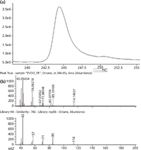
Figure 3: (a) Octane chromatogram and (b) spectrum isolated from the GCâHR-TOF-MS data. The extra m/z values (56, 67, 72, and 82) in the Peak True spectrum suggested that a coeluted analyte was contributing to the spectrum.
One of the primary benefits of GC×GC is the ability to chromatographically isolate analytes in the second dimension that coelute in the first dimension. Figure 4a shows the corresponding GC×GC separation, where two analytes were clearly resolved in the second dimension. The chromatography data software's automated peak finding feature isolated mass spectra for each analyte, and the associated library matches are shown in Figures 4b and 4c. The similarity for octane improved to 947, and hexanal (with masses 56, 67, 72, and 82) was chromatographically resolved with a library similarity of 906. Hexanal and octane have retention indices of 806 and 816, respectively, so their similar retention on the primary nonpolar column was expected. Their structural differences, aldehyde versus alkane, resulted in different retention on the secondary polar stationary phase column. With this GC×GC column combination, the analytes were distinctly resolved in the second dimension in spite of their first dimension coelution. Hexanal is known to be one of the major volatile components of olive oil while octane has gasoline odor properties, so both are important for characterization of the olive oil sample.

Figure 4: (a) Octane and hexanal are coeluted in the first dimension and the increased peak capacity of GCÃGC allowed for isolating these analytes in the second dimension. The isolated mass spectra were library matched with similarities of 906 and 947 for (b) hexanal and (c) octane, respectively.
Closer review of the GC–HR-TOF-MS spectrum in Figure 3 adds confidence to these identifications with accurate mass information. In Figure 5, overlaid extracted-ion chromatograms (XICs) of traces associated with each individual analyte, 85.101 and 82.077, apex together in agreement with the suspected absolute coelution. Based on library reference spectra and formula calculations of fragments, the m/z values were assigned to either hexanal or octane. Mass fragments associated with each analyte are compiled in Figure 5. The good mass accuracies of the fragments provided confidence to the identifications determined through nominal mass library searches of the chromatographically resolved analytes in the GC×GC data. Of particular note, hexanal and octane have a common nominal mass fragment of m/z 85 that is indistinguishable with low-resolution MS. Octane has a C6H13 fragment and hexanal has C5H9O. Although the nominal masses are identical, the accurate masses differ by 0.0364 amu, 85.1012 and 85.0648. These individual fragments were both observed with good mass accuracies, also reported in Figure 5.
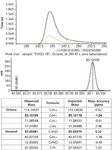
Figure 5: XICs for masses specific to each analyte apex together indicating absolute coelution. The mass spectrum associated with the GC peak shown in Figure 3 is the combination of the octane and hexanal spectra. With accurate mass information, individual fragments were assigned to each analyte with good mass accuracies observed. Octane and hexanal have a shared nominal mass of 85 with accurate masses differing by 0.0364 amu that were distinguished with the high-resolution MS system.
The spectrum shown in Figure 3 was separated with fragments assigned to two analytes through chemical reasoning, but the absolute coelution prevented mathematical deconvolution from isolating each individual spectrum. For other coeluted analytes with a larger degree of chromatographic separation, mathematical deconvolution provided an additional level of resolving power that isolated even more individual analytes. Even with the increased peak capacity of GC×GC, coelutions still occurred and the software's deconvolution feature mathematically resolved some of these overlapped analytes. Figure 6 shows that what appeared to be a single peak in the GC×GC contour plot was two analytes separated by 60 ms at their peak apexes in the second dimension. The software identified unique masses to define chromatographic shape, shown in Figure 6b, and isolated mass spectra for determining analyte identity (Figures 6c and 6d). These two analytes were identified as 1-penten-3-one and 1-penten-3-ol with similarity matches to the library spectra of 824 and 861, respectively.

Figure 6: 1-Penten-3-one and 1-penten-3-ol appear as a single peak in the GCÃGC data. With deconvolution two distinct peak shapes are apparent and the isolated mass spectra were library matched with similarities of 824 and 861, respectively.
Feature Selection to Distinguish Edible Oil Varieties
With these complementary analytical tools and powerful peak finding algorithms, sample characterization and differentiation were investigated and hundreds of analytes were measured and identified in each sample. Many similarities and differences were readily apparent in the fingerprinting comparison, shown in Figures 1 and 2. The software's reference feature was applied as a feature selection tool to further probe specific analyte differences in an automated way. Distinguishing analytes were located within the data by computing the relative concentration of analytes in a sample with respect to a specified reference sample. The reference feature tags each peak as a match, out of tolerance, not found, or unknown to indicate the similarity to the reference. Match and out of tolerance tags indicate that the analyte was present in the sample within or outside of the specified concentration tolerance relative to the reference, respectively. Not found and unknown tags indicate analytes that were only present in the reference or the sample, respectively. The extra virgin olive oil sample was set as the reference and each oil variety was the sample, such that peaks in the sample with not found or out of tolerance tags (with small concentration values) were indicative of extra virgin olive oil. Conversely, unknown and out of tolerance tags (with large concentration values) were indicative of the other oil varieties. The results were filtered by their type tag to locate analyte differences between the samples.

Figure 7: α-Cubebene, an analyte indicative of extra virgin olive oil, is shown. XIC 119 in the GCÃGC chromatograms and XIC 119.085 in the chromatograms for the GCâHR-TOF-MS data show the analyte peak present in extra virgin olive oil (orange) and absent (or at drastically lower levels) in the light olive oil (green). The observed and library spectra are shown, as well as accurate mass information for the molecular and fragment ions.
Many analyte differences were present and a selection of representative analytes that differed between extra virgin olive oil and olive oil are demonstrated here. α-Cubebene is a sesquiterpene with herbal odor properties that was observed to be elevated in the extra virgin olive oil relative to the light olive oil, as shown in Figure 7. Phenylethyl alcohol, a compound with known floral odor properties, was observed to be present in both the extra virgin and light olive oils at different levels (Figure 8). And heptane, which has sweet and ethereal odor properties, was elevated in the light olive oil relative to the extra virgin olive oil (Figure 9). In each case, the accurate mass information for the molecular and fragment ions added confidence in the analyte identifications to the library search results, with mass accuracies less than 1 ppm.

Figure 8: Phenylethyl alcohol, an "out of tolerance" analyte indicative of extra virgin olive oil, is shown. XIC 91 in the GCÃGC chromatograms and XIC 91.054 in the chromatograms for the GCâHR-TOF-MS data show the analyte peak is higher in extra virgin olive oil (orange) than in the light olive oil (green). The observed and library spectra are shown, as well as accurate mass information for the molecular and fragment ions.
The reference feature was used to find differences between extra virgin olive oil and each other oil variety and a collection of additional feature selection tools were also implemented to compile a representative list of specific analyte differences. In addition to the reference feature, paired t-tests between each oil variety and the fingerprint comparisons highlighted analytes with clear distinctions between the oil varieties. A collection of these analytes is shown in Figure 10a. The analyte peak areas (mean centered per analyte) are shown with some analytes consistently elevated in each oil variety relative to the others. This subset of analytes was submitted to PCA, and the corresponding scores plot is shown in Figure 10b. By selecting a subset of analytes that were specifically intended to distinguish the samples, PCA resulted in tighter clusters and more distinct grouping of each edible oil variety. The 50% mixture sample scores are also clearly distinguished as different from either pure group. These analytes appear to distinguish the oil varieties and therefore have potential to be used as food fraud markers.

Figure 9: Heptane, an "out of tolerance" analyte indicative of light olive oil, is shown. XIC 100 in the GCÃGC chromatograms and XIC 100.125 in the GCâHR-TOF-MS chromatograms show the analyte peak is higher in the light olive oil (green) than in the extra virgin olive oil (orange). The observed and library spectra are shown, as well as accurate mass information for the molecular and fragment ions.
Conclusions
Complementary GC–TOF-MS systems were used to characterize edible oils and clearly distinguish representative varieties. Aroma and flavor analytes in extra virgin olive, olive, peanut, grapeseed, and vegetable oils were sampled with HS-SPME and analyzed with GC×GC–TOF-MS and GC–HR-TOF-MS. Distinct visual two-dimensional chromatograms were generated for each edible oil variety sample, and clear similarities and differences were observed. Fingerprinting with PCA resulted in clustered grouping of each oil variety. Individual analytes were isolated and identified through chromatographic separation, mass spectral resolution, and mathematical deconvolution, and those that distinguished the oil varieties were determined through a variety of feature selection tools. These sample-distinguishing analytes were submitted to PCA to also classify and group the samples by edible oil type. These nontargeted analytical methods allowed for comparing edible oil varieties by their chromatographic fingerprints, characterizing the samples with the identification of individual analyte differences, differentiating simulated fraudulent oil mixtures from pure oil varieties with PCA, and confirming analyte identities with accurate mass data where mass accuracies of less than 1 ppm were routinely achieved. These data suggest that this method has the potential to detect food fraud.
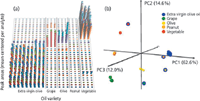
Figure 10: (a) Analytes determined to differ between oil varieties are shown. Peak areas are mean centered for each analyte across the samples. These analytes distinctly differ between the oil varieties and help distinguish them from each other. (b) PCA scores plot with analytes selected via feature selection for pure varieties and simulated fraud mixtures, denoted with blue outer circles, added as samples. The simulated fraud mixtures have scores between those of the pure variety and extra virgin olive oil.
Elizabeth Humston-Fulmer, PhD, is an appplications chemist with LECO Corporation in St. Joseph, Michigan. Direct correspondence to: info@leco.com
References
(1) Grocery Manufacturers Association (GMA), "Consumer Product Fraud: Deterrence and Detection"(Grocery Manufacturers Association, Washington, D.C., 2010). Available at: http://www.gmaonline.org/downloads/wygwam/consumerproductfraud.pdf.
(2) J.C. Moore, J. Spink, and M. Lipp, J. Food Sci. 7, R118–R126 (2012).
(3) P.A. Tranchida, P. Donato, F. Cacciola, M. Beccaria, P. Dugo, and L. Mondello, TrAC, Trends Anal. Chem. 52, 186–205 (2013).
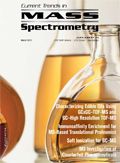
Thermodynamic Insights into Organic Solvent Extraction for Chemical Analysis of Medical Devices
April 16th 2025A new study, published by a researcher from Chemical Characterization Solutions in Minnesota, explored a new approach for sample preparation for the chemical characterization of medical devices.
Analytical Challenges in Measuring Migration from Food Contact Materials
November 2nd 2015Food contact materials contain low molecular weight additives and processing aids which can migrate into foods leading to trace levels of contamination. Food safety is ensured through regulations, comprising compositional controls and migration limits, which present a significant analytical challenge to the food industry to ensure compliance and demonstrate due diligence. Of the various analytical approaches, LC-MS/MS has proved to be an essential tool in monitoring migration of target compounds into foods, and more sophisticated approaches such as LC-high resolution MS (Orbitrap) are being increasingly used for untargeted analysis to monitor non-intentionally added substances. This podcast will provide an overview to this area, illustrated with various applications showing current approaches being employed.
Common Challenges in Nitrosamine Analysis: An LCGC International Peer Exchange
April 15th 2025A recent roundtable discussion featuring Aloka Srinivasan of Raaha, Mayank Bhanti of the United States Pharmacopeia (USP), and Amber Burch of Purisys discussed the challenges surrounding nitrosamine analysis in pharmaceuticals.
Extracting Estrogenic Hormones Using Rotating Disk and Modified Clays
April 14th 2025University of Caldas and University of Chile researchers extracted estrogenic hormones from wastewater samples using rotating disk sorption extraction. After extraction, the concentrated analytes were measured using liquid chromatography coupled with photodiode array detection (HPLC-PDA).
Silvia Radenkovic on Building Connections in the Scientific Community
April 11th 2025In the second part of our conversation with Silvia Radenkovic, she shares insights into her involvement in scientific organizations and offers advice for young scientists looking to engage more in scientific organizations.










